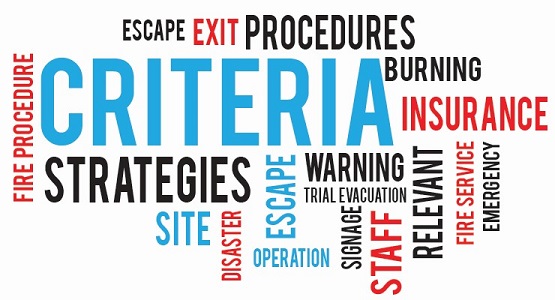 Thursday, April 25, 2024
Thursday, April 25, 2024  Thursday, April 25, 2024
Thursday, April 25, 2024 
After developing even the finest fire safety plan, implementation of its contents is imperative should a fire emergency arise in the building. It is vital that building owners, their property managers and onsite supervisors be fully versed on their roles and responsibilities as called for in the fire code. It also necessary to provide business employees and building occupants with the relevant emergency evacuation procedures, and to post them throughout the building. In some cases, property operator and managers opt to post “you are here” evacuations routes maps throughout the building to assist their occupants out of the building to safety. This signage displays a combination of the 911 call on the discovery of smoke or fire, evacuation procedure upon hearing the fire alarm audibles and shows the all means of egress. It should be noted that not all signage is the same in buildings and varies whether there is a single stage or two stage installed fire alarm system. The approved fire safety plan clearly outlines the type and model of the fire alarm system installed in the building.
While there are common elements in a fire safety plan, some sections are customized due to there being such a diverse range of buildings, types of occupancies, and the nature of the activities being conducted in the building. It certainly is no wonder some consider the approved fire safety plan being one of the most comprehensive set of documents in the building. It describes the occupant evacuation procedures, and contains schematics of the site plan, the locations of fire and life safety equipment, floor layout drawings, fire drill timetables, fire department access routes, etc. From establishing the safe haven areas for evacuees, outlining the locations of the emergency shutdowns for hydro, water and natural gas, to the fire watch procedures, the approved fire safety plan is tailored to comply with the fire code that is specific to the building.
Given that the fire safety plan is continually referenced, its contents must be reviewed and updated at intervals of no greater than 12 months to accurately reflect the current building layout, the fire equipment placement, and emergency personnel contact information. More advanced updates such as building structural changes, fire safety system upgrades and floor layout modifications may subsequently warrant a re-submission for re-approval by the City.
This article was contributed by Firepoint Inc, serving the GTA since 1997, developing fire department approved Federal and Provincial fire safety plans for newly constructed and existing buildings. See www.firepoint.ca or call 905-874-9400.